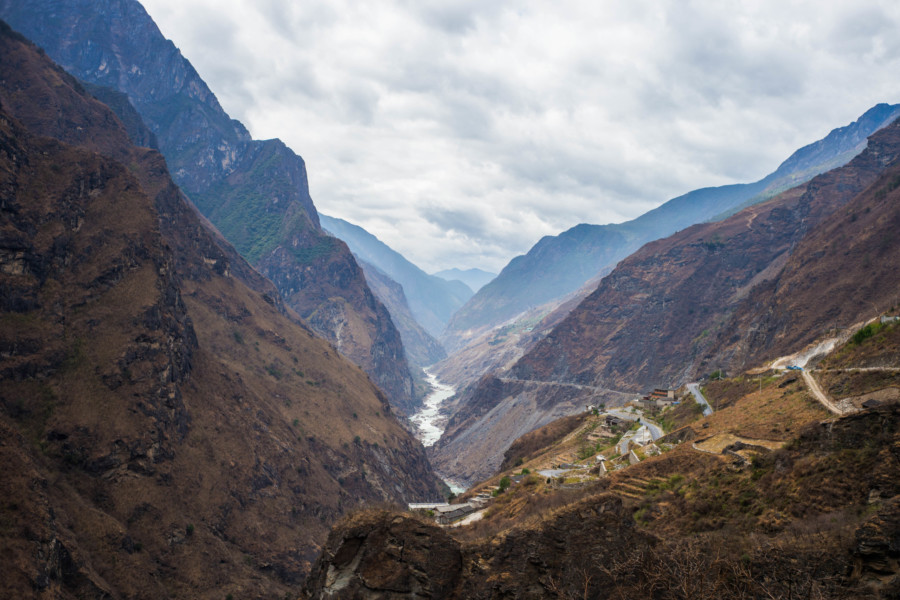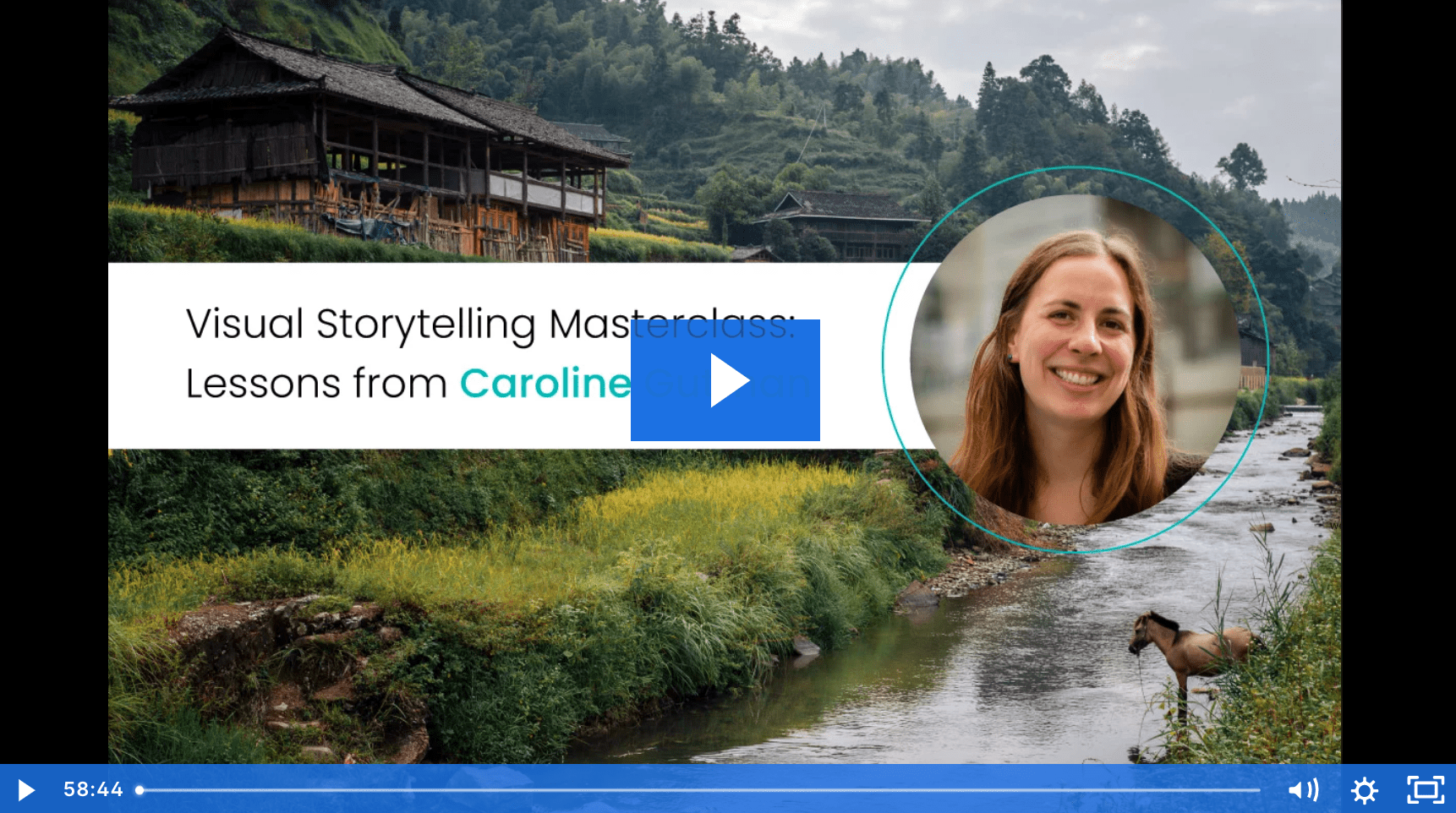Share
WATCH: Visual Storytelling Masterclass with Caroline Gutman
When it comes to visual storytelling, there are several key components to keep in mind to ensure you and your images make the most impact. Last wee...

When it comes to visual storytelling, there are several key components to keep in mind to ensure you and your images make the most impact.
Last week we sat down with Philly-based photojournalist Caroline Gutman for a visual storytelling masterclass. She shared a bit of her personal story and outlined why light, composition, moment and emotion make the perfect recipe for a successful image.
Watch the entire on-demand recording here and be sure to tweet any lingering questions to @photoshelter.
Watch to learn:
- The core elements of successful visual storytelling
- Strategies for bringing emotion, variety and narrative structures into your work
- How to use your own personal experiences and passions to tell more compelling stories
Cover photo by Caroline Gutman
On-Demand Webinar: Visual Storytelling Masterclass with Caroline Gutman

All your questions answered
Thank you to everyone for submitting questions for photojournalist Caroline Gutman. Feel free to tweet any lingering questions @photoshelter.
This Q&A was edited for clarity and length.
How important is the sequencing and cropping of the images to shape the narrative?
CG: With sequencing, this is something I still struggle with to be perfectly honest. I’ve tried to just embrace this idea of doing what feels right. In traditional storytelling, you want to build up the narrative to a climax and then resolve it and conclude it.
There’s something to be said for keeping the action or the highest moment of the story in the middle, but you also want to start off with a bang and something really powerful that sets the scene and helps the audience understand where you’re going and what to expect, and you want to end with something that is compelling and that’s memorable. Beyond that though, it’s sort of whatever resonates with you.
A trick I learned is try to also vary your photographs from one to the next. So if you have a photograph of a crowd of people in one photo, you don’t want to then go to something where it’s a lot of people in a crowd again. You might want to go into a portrait or something that is visually different, that contrasts with the previous one.
If you can give the viewers’ eyes something new to explore with colors, with composition, with lighting, with the moment, with the emotion, that’ll be more exciting and engaging for the audience. There’s no hard and fast rules with sequencing, to be honest. I re-sequence my work pretty regularly. I talk to photo friends who help me sequence, too. It’s an art, not a science.
In terms of cropping, it depends on what kind of work you’re doing. If you’re doing photojournalism, you’re really limited in what you can crop. Certain publications just let you crop the exterior. But it’s up to you. Again, there are no hard and fast rules, as long as you’re ethical in what you’re doing, if it’s not hiding something that’s critical to the story. And as long as it’s in keeping with the requirements of the publication you’re working with, or as long as you’re not hiding something, I think that’s the key to it.
How much story writing do you do aside from captions?
CG: Increasingly more. Photography is my first love, but I love writing. Certainly in pitching, but also increasingly in writing stories to accompany the photographs. It depends on the story of course. It’s challenging to do both simultaneously.
I don’t know about you, but when I’m taking photographs, it’s hard for me to tune in and listen to what’s happening, so it’s sort of a balancing act. And then I have to juggle when I’m trying to report and interview at the same time as photographing.
I find it to be a really cathartic and complimentary way to support my photographs because I do have those interactions and those experiences with the people I photograph that I can give more detail about beyond the captions, because a lot of times the detail is too much for a caption. So if I can write about it then I’m all for it.
Do you create a photo story and then market it, or are you assigned a photo story and then you go create it?
CG: All of the above. Sometimes it’s the method of throwing spaghetti at the wall and seeing what sticks. In the case of documenting the homelessness crisis in San Francisco during the pandemic, I was pitching it at the same time as I was photographing it.
To be honest, it hasn’t been published yet and that’s okay. I just felt the need to document it. If it lands somewhere one day, great, if not, that’s okay – I’ll publish it myself because sometimes you just have to make the work and see where it ends up, but sometimes you feel this need to make the work.
I do a combination. Some editors like to see sample work, others want to be able to guide you in the storytelling and what you’re photographing. There’s really no hard and fast rule, again. Just follow your instinct. If it feels like it’s a story that you need to show some work and be able to show that you’ve done the research, that you’ve made the connections, go for it.
If it’s cost-effective, if you can do it, great, if not, then pitch it first or apply for a grant first. I think making the work usually makes it more compelling especially for photo editors who are visual people, if you have some sort of visual, you can share. Even if it’s previous work that’s related or reminiscent, that’s also very helpful.
Do you speak to people on the street before taking their portraits, or is it afterwards, if you want to capture a candid moment?
CG: That’s a great question. It’s a little bit of both. It’s reading the situation. I personally feel more comfortable talking to someone and informing them of what I’m doing, but that’s not always possible. Portraits, of course, I’ve spoken to them and gotten their permission, but in faster situations or where I do want it to be candid, I will often take the photograph. If I can, I’ll talk to them, if I can’t, that’s life. I try to think of them in my photograph. It really depends on the situation.
You can also sometimes get implicit permission, whether it’s through eye contact or showing your camera. I think it’s really situation dependent. Personally, I feel more comfortable making work where the people I’m photographing know that I’m there in some capacity. This is why I’m not a street photographer.
Do you have any general advice about pitching a story? When sending photos to an editor, do you typically send a larger number of photos and let them make the selections or do you pair it down yourself and then share?
CG: For pitching, as with photography, know your audience and figure out what topics they care about, what topics you care about, and then make sure that your pitch aligns with that, and don’t be afraid to say it.
If it’s about food insecurity, explain why this story matters in their coverage and how this could support greater funding. Be able to tie it into the bigger picture again. It comes back to connecting local with global. Why does this story matter and why should they publish it?
Also always check that they haven’t run this story before. Double check, triple check, before you hit send that they haven’t done something very similar or the same thing because it does happen.
If it’s a cold pitch and I have photographs, I will share maybe three or four to kind of wet their appetite. If it’s a finished project, I may share a few more, and if I’m introducing myself, I’ll share links to full projects because I just want them to see the kind of work I make. All I can say is trust your instinct. If you feel like your email’s too long, then shorten it and send fewer photographs. There’s no secret rule as to what will work and resonate with an editor. It’s kind of a crap shoot. The best thing you can do is what feels true and right to you and just send it out and see where it lands.
How would you describe your photographic vision today in relation to how you’ve changed and approached things over the years?
CG: I think my vision is to humanize and show the humanity of those I’m photographing as much as possible, and to do it in a respectful and dignified way, where who they are shines through. It can be moments of joy, it can be hardship, but try to show who they are and what their experiences are through the photograph in a way that hopefully resonates with other people.
It’s really about the connection I have with the people I’m photographing that matters the most to me, and hopefully using my camera and my photographs to make the world a little bit more compassionate and make us think of others in harder situations and who face greater hardships than we do.
Beyond that, I love learning about different subjects. I love diving into different stories and just being open to things that I may not have expected, the stories and people I never could have expected to come into my life or for me to be allowed a glimpse into their lives.
If you’d like to see Caroline’s entire presentation, along with the questions asked here, watch the on-demand webinar above.


